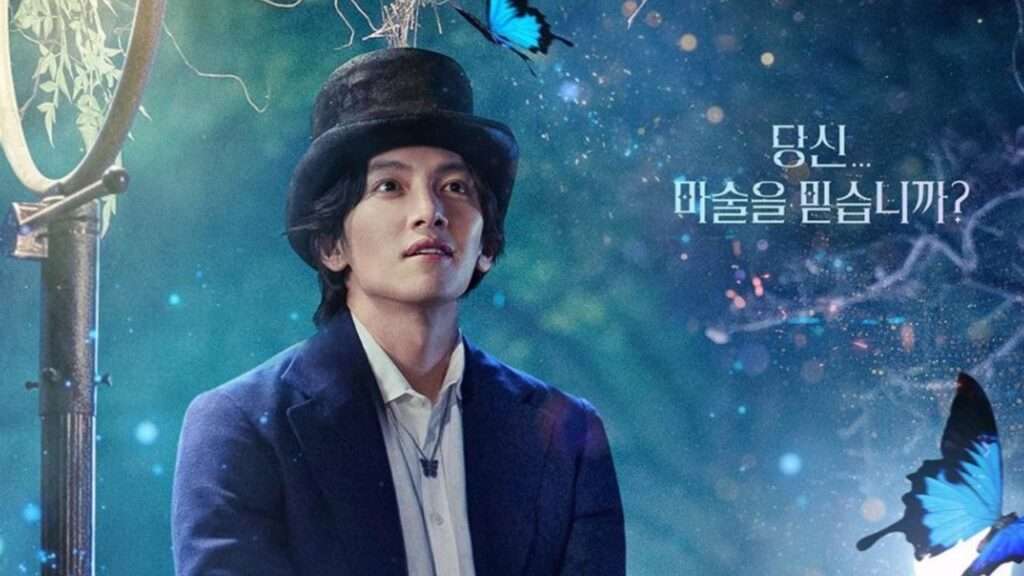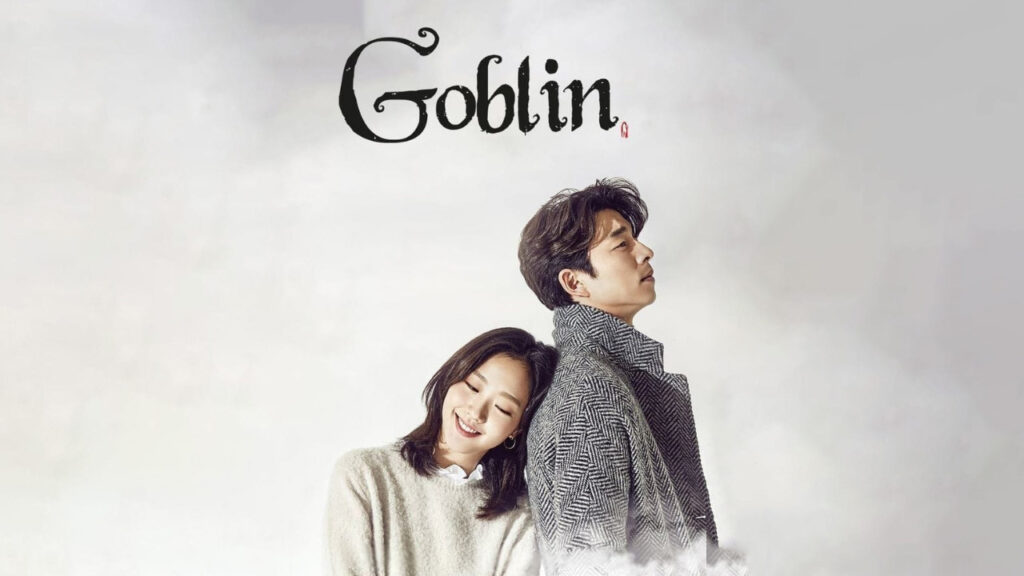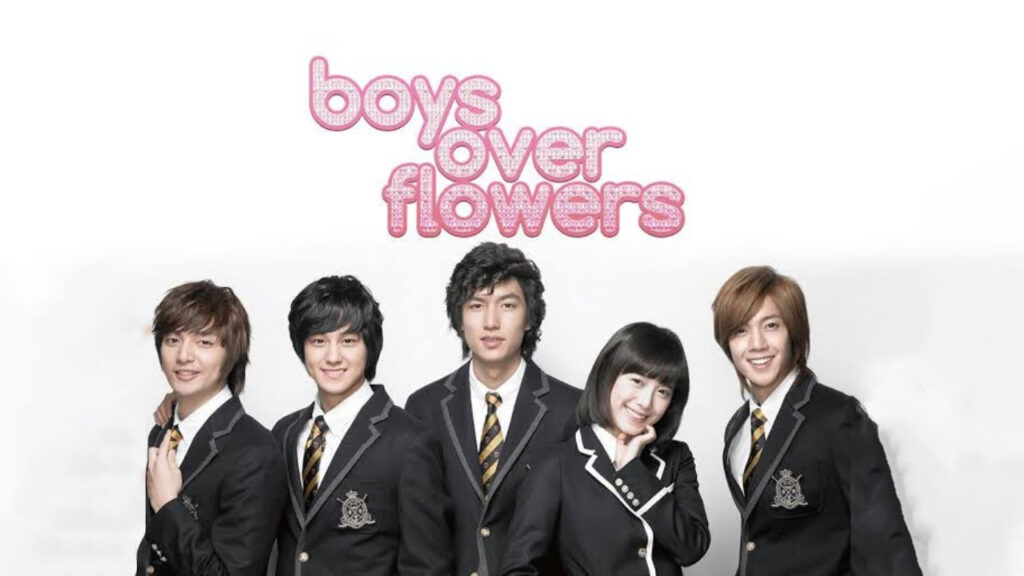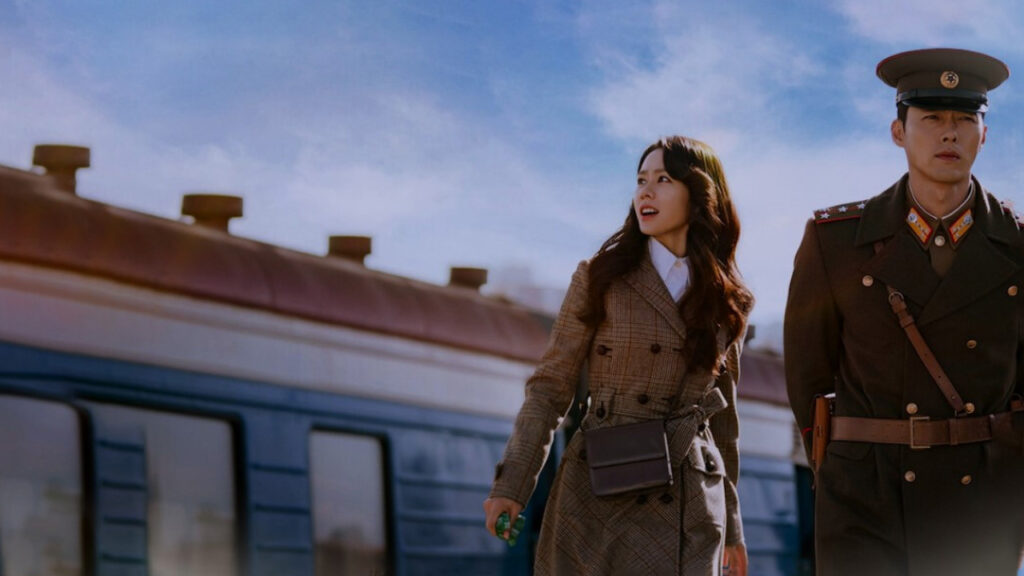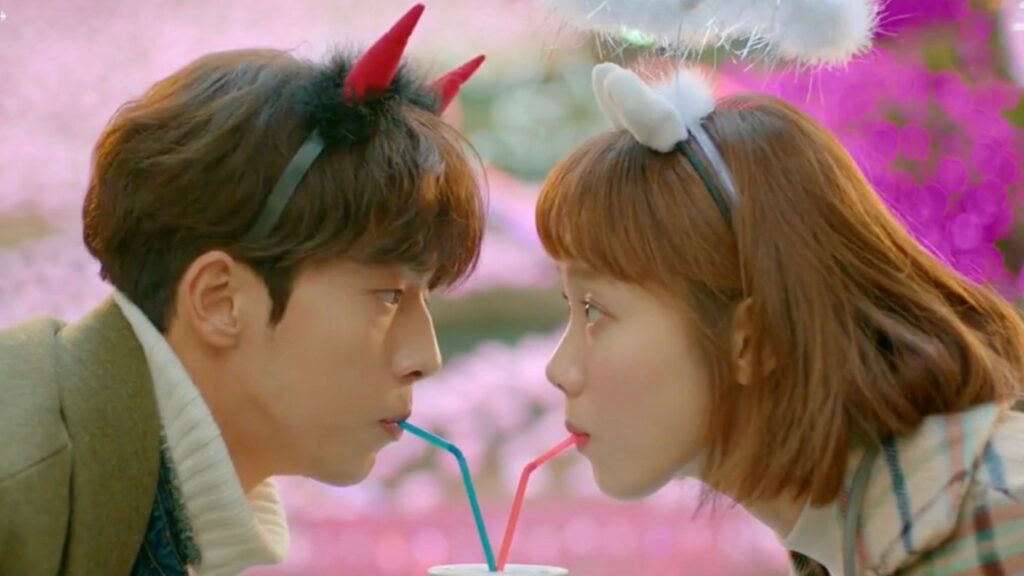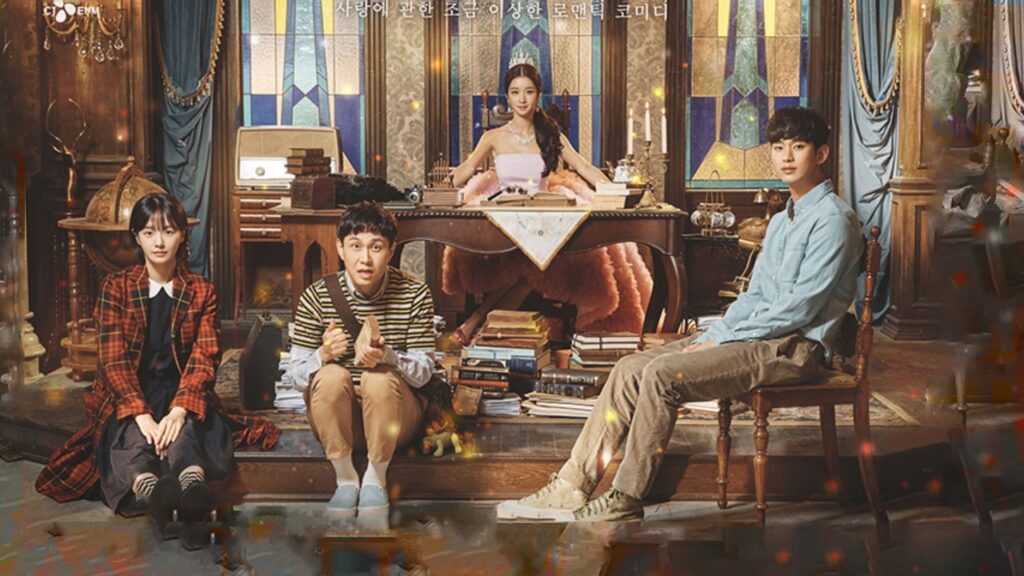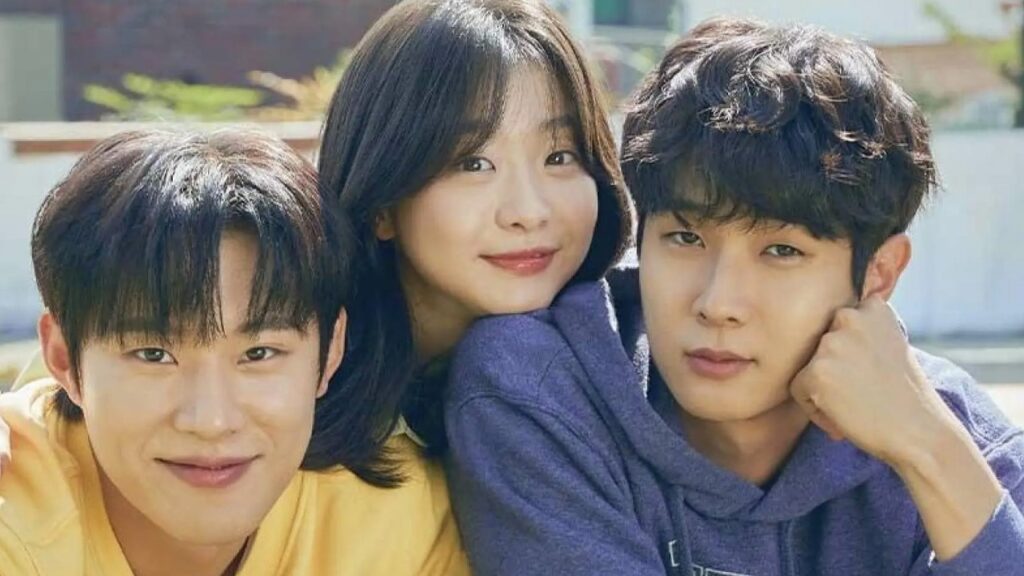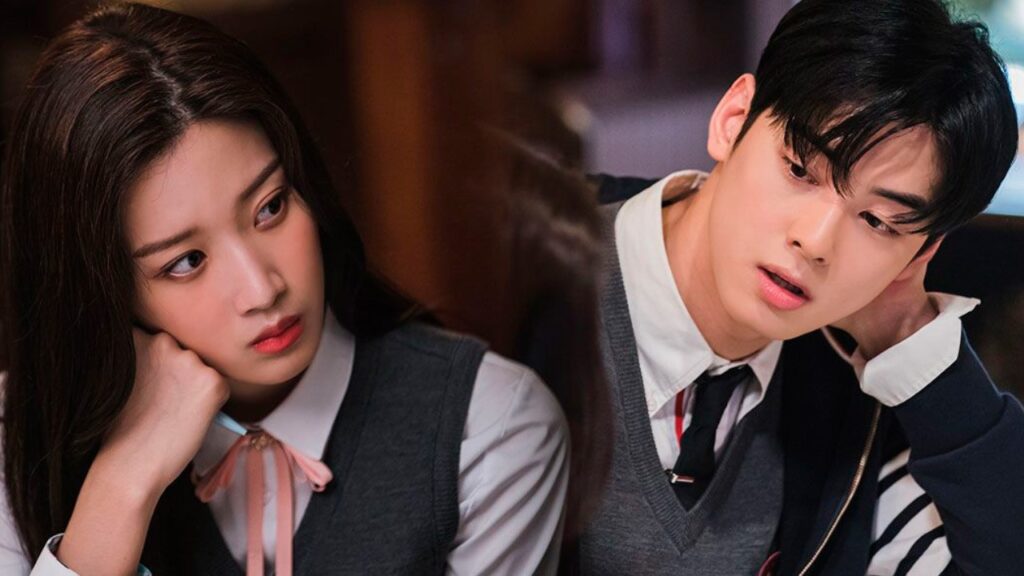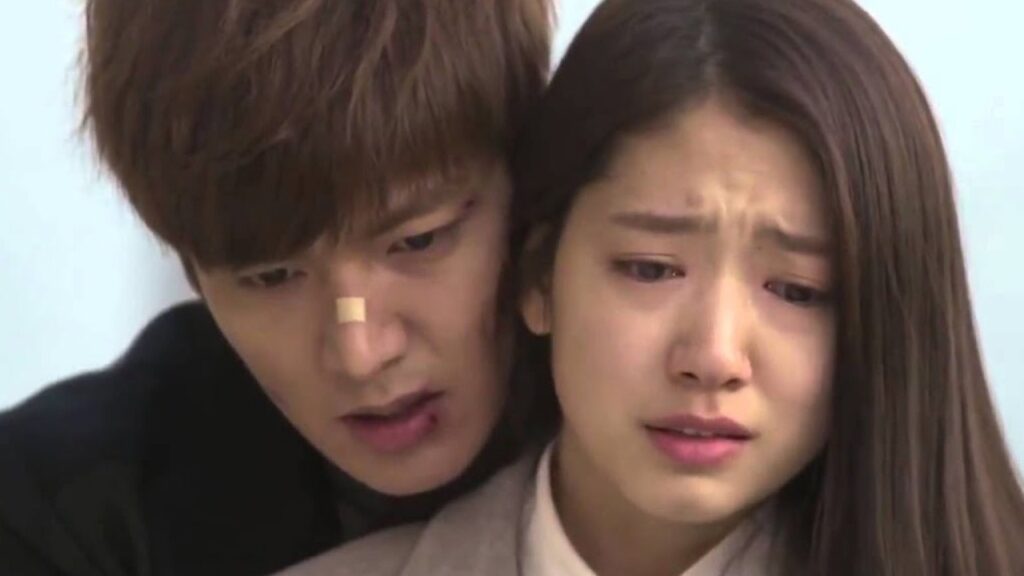Do you believe in Magic?? Suppose you are a teenager and you are struggling in your life and dream of any miracle to happen to you that will make your life easier, and that moment someone asks you “Do you believe in magic?” What will your answer be? Today in this article The Sound of Magic full review, I am going to tell you exactly the same story about a teenage girl who meets a mysterious magician in the toughest time of her life who asks, “Do you believe in magic?” And the drama dares to explore the answer not only from the girl but also from you. The Sound of Magic is a drama that takes you on a deeply emotional journey through the lives of three very different characters who are dealing with pain, pressure, and the desire to escape reality. With only six episodes, this drama unfolds like a modern-day fairytale wrapped in symbolism, music, and hard truths about growing up. So now, let’s break down what makes this show so hauntingly beautiful from its powerful themes and captivating visuals to its unforgettable soundtrack and performances.
Plot Summary Without Spoilers
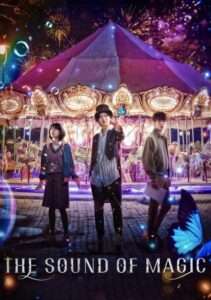 The Sound of Magic tells the story of Yoon Ah Yi, a high school girl who is forced to grow up too fast. Struggling with poverty, abandonment, and the pressure to survive, Ah Yi hides her pain behind top grades and quiet resilience. Her only dream? To become an adult quickly so she can escape the burdens weighing her down.
The Sound of Magic tells the story of Yoon Ah Yi, a high school girl who is forced to grow up too fast. Struggling with poverty, abandonment, and the pressure to survive, Ah Yi hides her pain behind top grades and quiet resilience. Her only dream? To become an adult quickly so she can escape the burdens weighing her down.
But her life takes a mysterious turn when she meets Ri Eul, a strange magician who lives in an abandoned amusement park. He is dressed in a tattered cape and top hat, Ri Eul asks her a simple yet profound question: “Do you believe in magic?” While others see him as delusional or dangerous, Ah Yi finds herself drawn to his childlike wonder and comforting presence.
Meanwhile, Na Il-deung, Ah Yi’s rich and lonely classmate, begins to question his own path as their lives intertwine. With school pressure mounting and secrets slowly unfolding, the line between reality and fantasy starts to blur.
Without relying on dramatic twists or traditional romance, the drama The Sound of Magic unfolds like a soft, melancholic fairytale that dares to talk about real-life wounds, forgotten dreams, and the silent cries of growing teenagers in a world that doesn’t always listen.
Characters and Cast: Complex Layers Behind the Appearance
At the heart of drama, The Sound of Magic lies a trio of deeply layered characters. Each of them carries silent burdens, hidden hopes, and emotional scars. The drama’s emotional depth wouldn’t hit as hard without the sincere and vulnerable performances of its cast. Let’s have a look at the trio.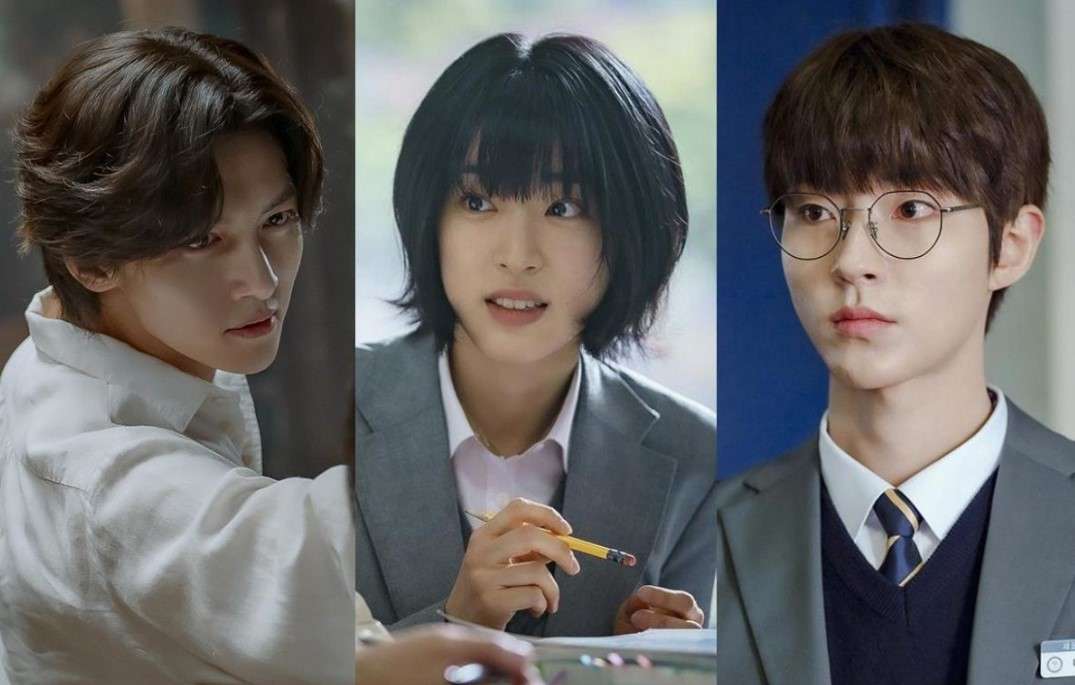
Ri Eul (played by Ji Chang Wook)
Mysterious, eccentric, and almost childlike, Ri-eul is a magician who claims he never wanted to grow up. He lives in an abandoned amusement park, performs magic tricks and asks one question: “Do you believe in magic?” But beneath the glitter and illusions is a deeply misunderstood man grappling with his own painful truth.
Ji Chang Wook delivers one of his most emotionally complex roles here in this drama. He successfully blends whimsy and melancholy, innocence and darkness. His ability to shift from an enchanting performer to a wounded soul is what makes Ri Eul so hauntingly unforgettable.
Yoon Ah Yi (played by Choi Sung Eun)
Ah Yi is the emotional anchor of the story of The Sound of Magic. She is a bright student weighed down by adult responsibilities. With her father gone and her mother missing, she works part-time to care for her younger sister. While she wants to believe in magic, life keeps teaching her not to.
Choi Sung Eun’s performance is quietly powerful. Her eyes often say more than words ever could by expressing exhaustion, longing, and fleeting wonder. Her portrayal makes you feel every bit of Ah Yi’s inner conflict between hopelessness and the fragile desire to dream.
Na Il-deung (played by Hwang In Youp)
At first glance, Il-deung is the perfect student who is smart, privileged, and on the path society expects from him. But his tightly controlled world begins to unravel as he gets closer to Ah Yi and witnesses Ri Eul’s free spirit. His journey is full of self-discovery and quiet rebellion.
Hwang In Youp adds subtle layers to what could have been a one-dimensional role. He shows Il-deung’s fear, confusion, and longing for something beyond academic achievement and that makes his transformation both believable and touching.
Themes of Escapism, Hope, and Mental Health
The Sound of Magic may look like a fairytale drama on the surface, but at its core, it’s a poignant exploration of the emotional struggles that young people silently endure. Through its magical metaphors and bittersweet storytelling, the drama dives deep into escapism, hope, and mental health like themes that are rarely portrayed with such sensitivity in K-Dramas. Let’s talk about it.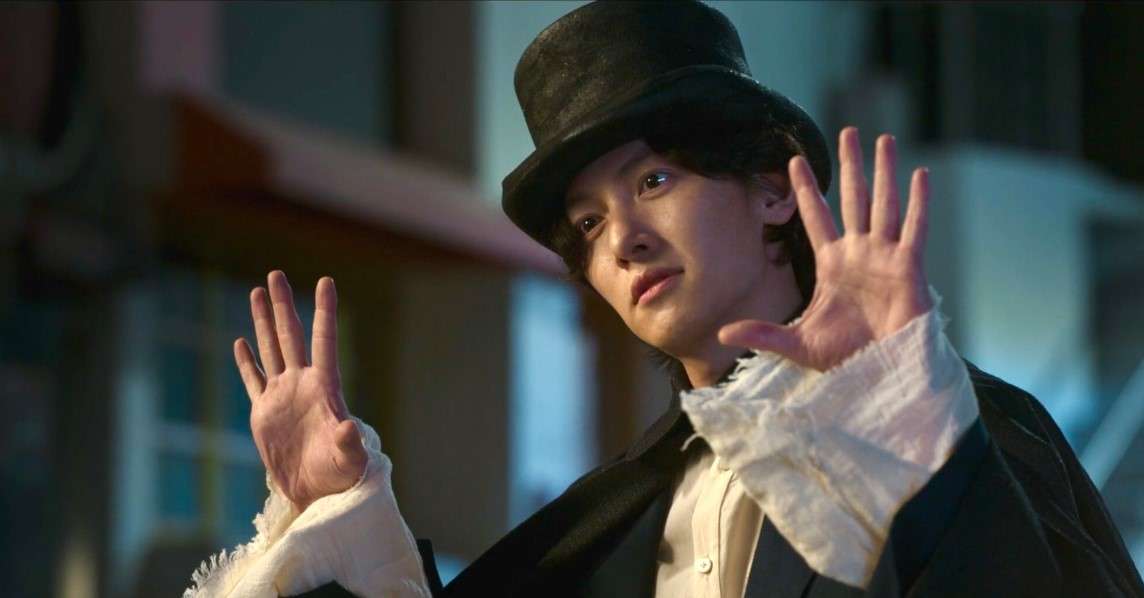
Escapism — When Magic Becomes a Refuge
In The Sound of Magic, magic isn’t about tricks or illusions, it’s more about escape.
For Yoon Ah Yi, life is a constant battle. She has no one to rely on and she wishes that she could skip the pain and become an adult faster. On the other hand, Na Il-deung, his wealthy, controlled life feels suffocating to him. And Ri Eul? He’s someone who has already walked through darkness and now chooses to live in a world of wonder, where pain doesn’t follow him.
The idea of “believing in magic” becomes symbolic. It means holding onto something beautiful, even when reality tries to crush it. It means wanting a place to hide, not out of weakness, but out of the need for survival. This theme speaks to anyone who has ever longed for a way out when life felt too heavy.
Hope — Fragile, Faint, but Always Present
Even with all its sadness, The Sound of Magic never fully lets go of hope.
It doesn’t shout. It doesn’t decorate it with flashy words. Instead, it shows hope in subtle, emotional moments just like a smile that returns after pain, a friend who listens, and a moment of stillness where dreams feel real again.
This drama doesn’t promise happy endings. But it reminds us that even a small spark of belief in ourselves, in others, or in magic can be enough to keep going. It’s a soft message, but a deeply comforting one.
Mental Health — The Quiet Battle Inside
One of the most powerful things about this drama is how it portrays mental health without turning it into a dramatic plot twist.
It shows us how people can seem fine on the outside but be silently falling apart inside. Ah Yi’s exhaustion, Il-deung’s pressure, and Ri Eul’s past trauma are all parts of this quiet battle. The drama also highlights how society treats mental illness, with misunderstanding, fear, and judgment instead of compassion.
Rather than labeling people as “crazy” or “normal,” the story asks us to look deeper. To see pain, not as weakness, but as a very human thing that we all carry. And that, maybe, believing in magic or simply being believed in can be healing in its own way.
Through its dreamy visuals and melancholic songs, The Sound of Magic reminds us that we all carry unseen burdens. Some hide it in silence, some in a smile. And some, like Ri Eul, in magic. But behind it all, this story gently says:
“It’s okay to hurt. It’s okay to dream. And most of all, it’s okay to ask for help.”
Musical Direction and OSTs – A Symphony of Emotion
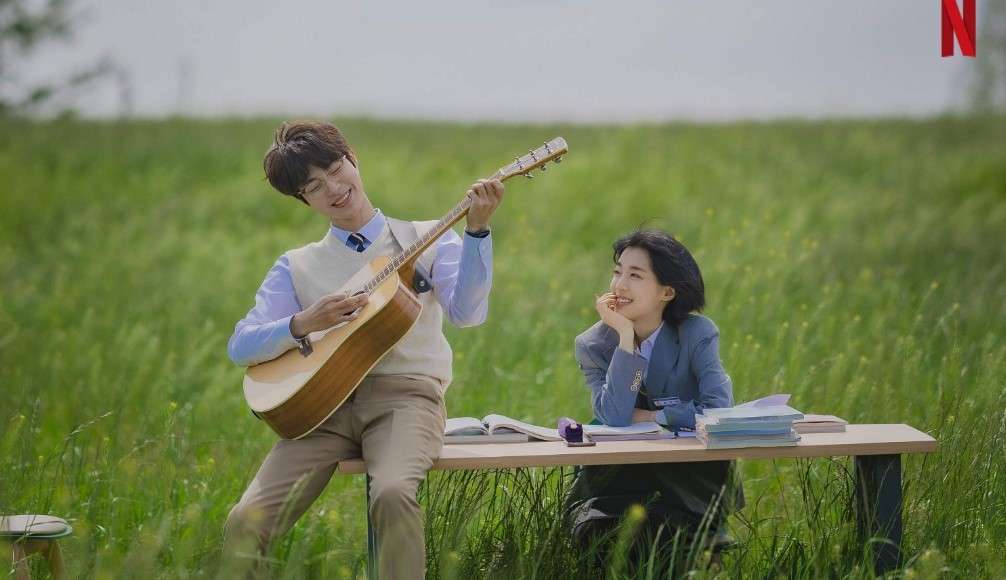
One of the most defining elements of The Sound of Magic is its musical identity. Unlike most K-Dramas, this series is part musical, where characters don’t just speak their emotions, they sing them. The result is a story that feels like it’s wrapped in poetry, carried through song, and deeply connected to the characters’ inner worlds. The music isn’t just background, it is the emotion.
The soundtrack of The Sound of Magic comprises 86 tracks spread across four discs, that successfully blend vocal performances and instrumental pieces that encapsulate the show’s magical and emotional essence.
The Sound of Magic – Full OST Tracklist
Disc 1: Vocal Tracks & Key Themes
- Magic In You by Ji Chang Wook, Sondia, Ye. Z, Lee Ye Seul
- Do You Believe In Magic? by Ji Chang Wook
- Don’t Make Me Dream by Ji Chang Wook & Choi Sung Eun
- Merry-Go-Round by Ji Chang Wook & Choi Sung Eun
- A Curse of Asphalt by Ji Chang Wook
- Annarasumanara by Ji Chang Wook & Choi Sung Eun
- My Dream Family by Choi Sung Eun
- I, As A Grown Up Or A Child by Choi Sung Eun
- Have A Good Night by Choi Sung Eun & Hong Jung Min
- Consolation by Choi Sung Eun
- I Mean It by Hwang In Youp
- Every Flower Must Grow Through Dirt by Kim Sun Kyung
- I Will Wait Here by Kim Sun Kyung
- My Dream Family (Calm Version) by Park Seong-il
- My Dream Family (Sentimental Version) by Park Seong-il
- True Identity of The Magician by Choi So Rin
The rest of the tracks include instrumental and background scores, you can also find them in any of the music streaming apps you like.
Visuals and Set Design – Creating a Dream-Like World
From the very first scene, The Sound of Magic pulls viewers into a universe that feels both whimsical and hauntingly real. A delicate balance that was made possible by its remarkable visual storytelling. The drama’s cinematography and set design aren’t just aesthetically pleasing; they are the key instruments in conveying its emotional tone and fantasy-laced themes. Let’s have a detailed idea of that.
The Enchanted Amusement Park
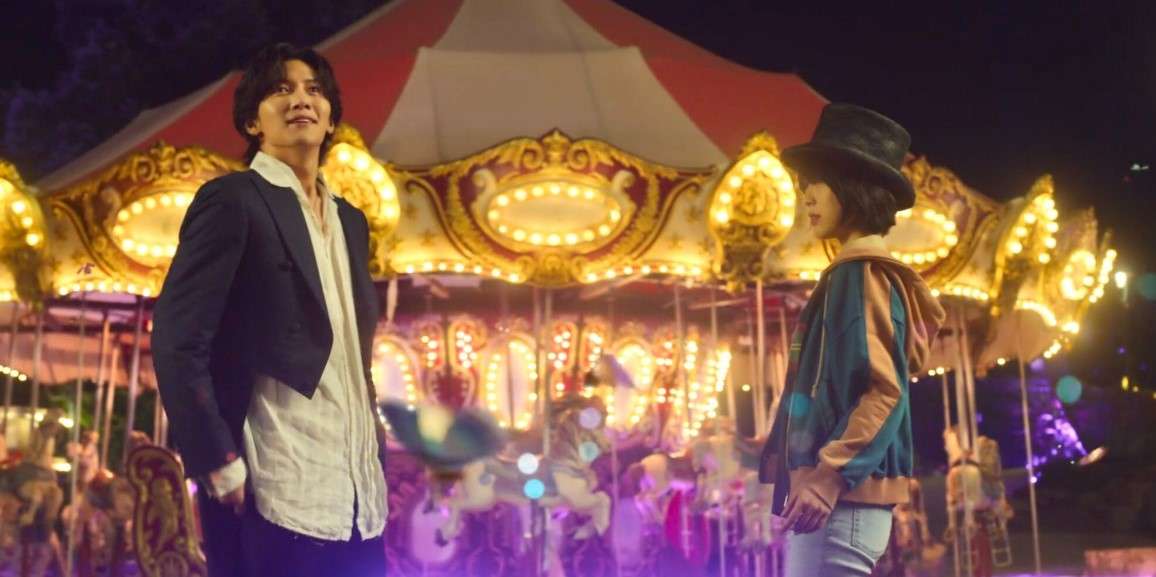
At the heart of the drama lies an abandoned amusement park, the mysterious home of Ri Eul. This space is more than just a backdrop. It’s a symbol of forgotten dreams, lost innocence, and the wonder of believing in something beyond reality. The rusted rides, broken mirrors, and flickering lights contrast with the magic Ri Eul tries to preserve and create a dream-like melancholy. It’s where imagination meets decay and somehow, beauty is born from it.
Fantasy and Reality: Blurred Yet Beautiful
What makes the drama The Sound of Magic so visually striking is how it blurs the lines between fantasy and reality. Cinematographer Kim Tae-seong (of Navillera and Beyond Evil) uses warm lighting, dramatic shadows, and sweeping camera movements to create surreal, almost theatrical visuals. Scenes shift effortlessly between gritty real-world pain and magical illusions, reminding viewers that sometimes, both coexist in the same frame.
Whether it’s Ri Eul levitating mid-air or Ah Yi dancing under imagined stardust, the VFX is subtle yet elegant and enhances the emotion without ever overshadowing it.
Color Palette and Mood
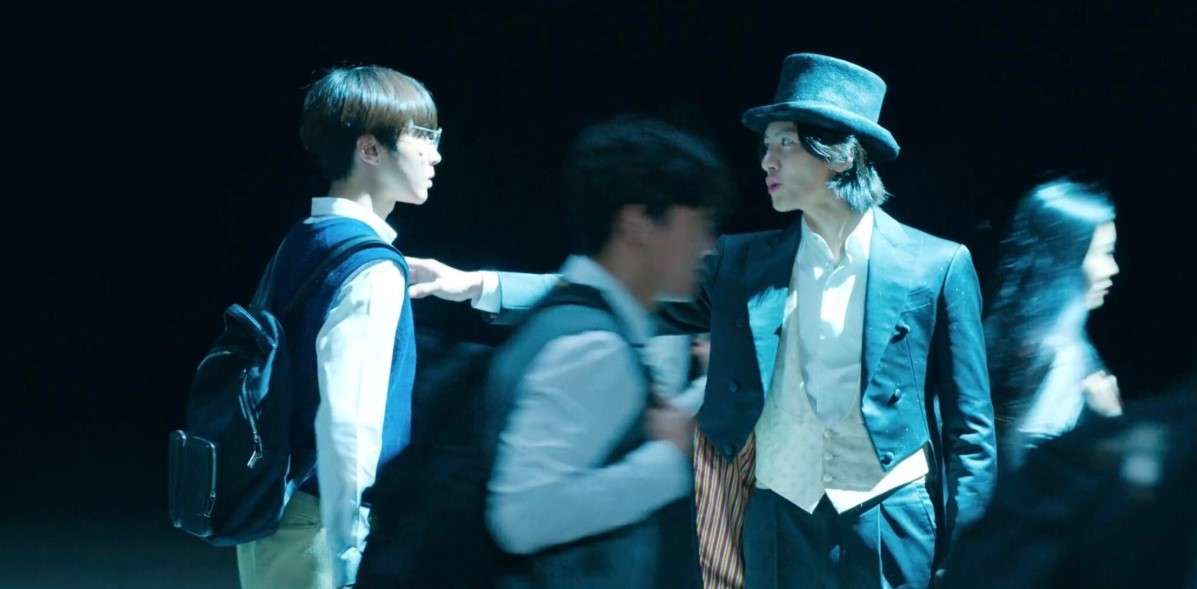
The series uses a carefully curated color palette to reflect the characters’ inner worlds:
- Soft pastels and glowing lights in magical moments represent hope and innocence.
- Cool greys and dim lighting highlight Ah Yi’s emotional struggles and Il-deung’s pressure-filled life.
- Golden hues and warmth surround moments of healing or personal breakthroughs.
This visual layering allows viewers to feel the emotional temperature of each scene, even without a single word spoken.
A Cinematic Experience
Every frame of The Sound of Magic feels like a painting or a page from a fairytale book. The set design, lighting, costumes, and visual effects all work in harmony to evoke wonder and introspection. The series never tries to look “realistic”, instead, it builds a world that encourages us to dream, question, and feel.
Overall, If you’ve ever wanted to step into a storybook laced with both sorrow and magic, The Sound of Magic will take you there, one mesmerizing frame at a time.
Strengths and Weaknesses – An Honest Breakdown

No drama is perfect, and The Sound of Magic is no exception. While it enchants viewers with its magical tone, heartfelt music, and deep themes, it also faces criticism for certain narrative choices. Here’s an honest look at what the drama does right and where it stumbles.
✅ Strengths
A Unique Musical Format in K-Drama:
The Sound of Magic dares to be different. The musical storytelling approach is a bold and refreshing experiment in K-Drama land. Instead of simply using OSTs in the background, characters sing to express their deepest emotions, a technique that works surprisingly well thanks to committed performances and heartfelt lyrics.
Visual and Emotional Aesthetic:
This drama is undeniably a visual feast. The use of light, color, set design, and cinematography creates a fairytale-like ambiance that mirrors the show’s emotional highs and lows. It’s not just pretty, rather it’s purposeful.
Powerful Performances by the Cast:
Ji Chang Wook as Ri Eul is both enchanting and haunting. His mysterious aura perfectly balances between fantasy and reality. Choi Sung Eun delivers a sincere and raw performance as Ah Yi, making viewers empathize with her every tear and smile. Hwang In Youp’s portrayal of Il-deung adds quiet depth, especially as his character develops.
Deep Themes with Real-World Relevance:
Topics like mental health, poverty, societal pressure, and the pain of growing up are woven into the magical tale. The drama doesn’t shy away from showing the harsh truths behind its whimsical surface.
❌ Weaknesses
Pacing Can Feel Uneven:
Despite having only six episodes, some scenes drag while others feel rushed. The story could have benefited from either a tighter edit or a slightly longer format to flesh out emotional arcs more naturally.
Limited Character Development for Supporting Roles:
While the main trio gets well-deserved attention, the supporting characters (like Ah-yi’s sister or the school bullies) are underdeveloped. Their roles feel more functional than fleshed-out, which is a missed opportunity.
Final Thought
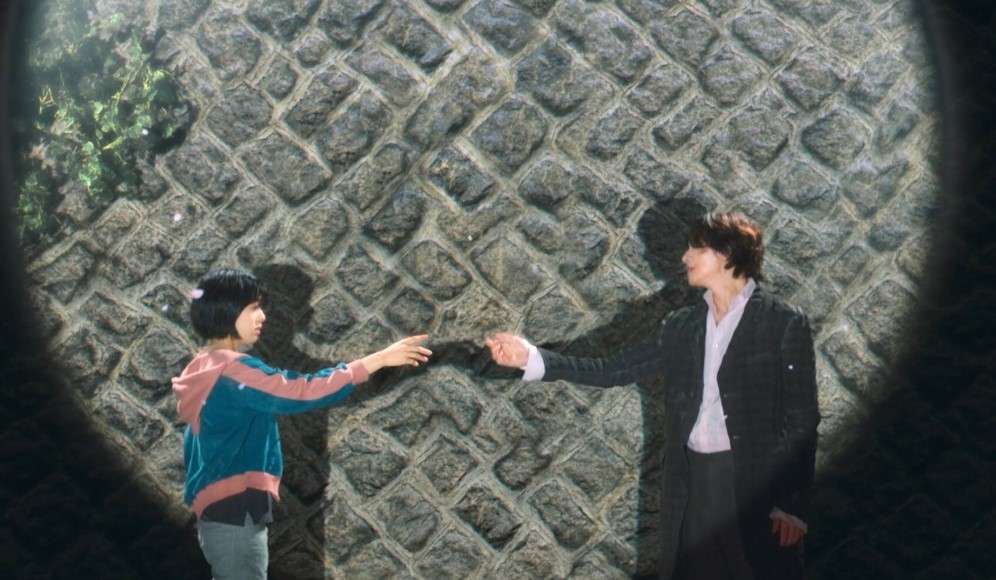
Despite a few bumps along the way, The Sound of Magic succeeds in being a rare kind of K-Drama, one that dares to be poetic, vulnerable, and genre-defying. If you’re open to its rhythm, it has a lot of beauty and depth to offer.
In conclusion, I want to say, The Sound of Magic isn’t just a drama, it’s a question whispered into the hearts of those who’ve lost their spark. With its lyrical storytelling, unforgettable music, and aching portrayal of youth caught between dreams and reality, it dares us to look beyond the ordinary. It tells us that even in a world full of disappointments, a little magic still exists. Obviously, if we’re brave enough to believe so.
It may not be perfect, and it may not be for everyone, but for those who connect with its message, The Sound of Magic becomes more than just a show. It becomes a quiet comfort, a mirror, and maybe even a spell. So, if you’ve ever longed to escape, to dream again, or to hear someone say, “Annarasumanara” which means “Do you believe in Magic” and make you smile, then this drama just might be exactly what your heart needs. And if you already watched it, then let me know, do you agree with me??

